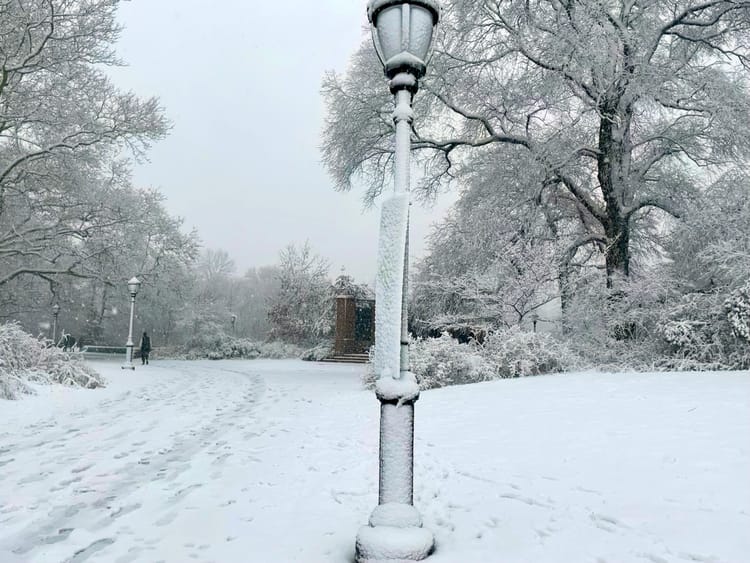Winds Like Knives Slice Through the Intersections

A slap in the face. That’s how the wind greets you when you turn the corner. No, take that back. More like a slap-in-the-face, punch-in-the-gut, ear-boxing, cheek-pinching, nose-honking, full-body spin, capped off by an anvil drop, best on display in a Warner Bros. cartoon.
This attack arrives courtesy of northwestern winter winds blasted off the Hudson and funneled through the topography of our urban canyons and steppes. They bring tears to your eyes and stab the hearts of fellow pedestrians braving the sidewalks beside you. Skyscraper-lined wind tunnels and the sharp angles of intersections are particular foci of this blustery malevolence. Hudson Yards and Battery Park are victims of the Venturi Effect where wind increases in velocity as it enters a narrow space from a wide one. As you squint and turn your head from the onslaught, consider the principle at work on warmer days: your thumb over a garden hose, arcing a high-speed spray towards the sun. But those times seem far away. For now, spit a few choice curses into the wind. Damn you, Giovanni Battista Venturi, and damn your fluid dynamics.
The city is a tapestry of snarled wind patterns. In spots where one building towers above a plaza, it is the Monroe Effect unleashing its fury. This phenomenon borrows its name not from an Enlightenment scientist, but a Hollywood icon. As gusts crash into the face of a building, they race down its sheer façade, slamming into the sidewalk and bouncing back under the skirts of glamorous starlets who happen to be passing by. All well and good when you’re Marilyn Monroe, but wickedly chilling for the rest of us mortals.
Since the early 1900s, the Flatiron Building has been known as a particularly ferocious locale. Clenching bowlers on their heads and clinging to lampposts, some looky-loos once hoped to catch a peek at enticing ankles as the updraft rustled women’s undergarments. Legend has it that police would chase off these windblown voyeurs with the phrase “23 skidoo,” or “skedaddle from 23rd Street.”
On these blustery winter days, you are happy to skidoo from this onslaught. Struggle to wrench open the door to your favorite coffee shop and collapse into a window seat. Pity the windblown wayfarers outside as you tame your hat hair and blow into your steaming cup.

- Fortify yourself for your next gale force encounter with a hot toddy. If one too many crosses your lips, you may find yourself three sheets to the wind—a phrase of nautical origin, but referring to loose lines (ropes), rather than sails. Speaking of nautical winds...
- Sailors’ Snug Harbor on Staten Island was founded in 1801 as a home for aging sea dogs. Building C is topped with a weather vane connected to an arrow floating in an interior dome. As winds put the vane through its paces, it’s rumored to recreate the sounds of a rocking ship—a lullaby for the sea-lorn salts.
- We suppose that our readership does not count the super-rich among its number, but in case you are considering the purchase of a luxury condo, we advise avoiding the towers of Billionaire’s Row. Strong gusts wreak havoc on elevator shaft cables and haunting groans bear witness to the wind’s displeasure at these sky-scraping impediments to their flow. Light a candle in your small apartment and as you watch it flicker in the draft from your open window, give thanks you are not heir to a railroad fortune or encumbered with an oligarch’s wealth.




